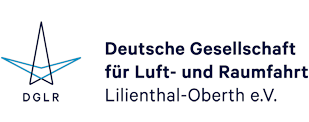DGLR-Publikationsdatenbank - Detailansicht
Autor(en):
F. Heise, S. Kazula
Zusammenfassung:
The electrification of commercial aircrafts is one key strategy to mitigate aviation-related emissions and hence climate change effects. This requires high power electric motors with low weight and volume for aircraft propulsion. The critical enablers of those MW-class high specific power electric machines are highly capable cooling systems, allowing to increase current densities and/or rotational speeds to obtain more power output, while maintaining geometrical extents and mass. Such cooling technology requires to be highly suitable for aviation purposes, leading to high demands on cooling effectiveness, energy efficiency, additional mass, safety and reliability as well as costs and durability. Consequently, the goal of this paper is to perform an assessment of such technologies based on aviation-adjusted weighted criteria. As first step, an overview of electric motor cooling methods and relevant literature is established. To condense the obtained information, an ensuing classification and categorization according to different methodical approaches is performed. Subsequently, the selected assessment criteria are weighted through pairwise comparison, followed by the evaluation of each cooling concept based on the weighted criteria. Concept-specific evaluation parameters are obtained, enabling the comparison of technologies and the selection of preferred variants. Promising options turn out to be the cooling by cooling channels, the hollow conductor cooling and the heat pipe cooling. Among these, the channel cooling stands out due to its decent overall criteria fulfillment. As different cooling approaches have different strengths and weaknesses, a combination of these variants seems expedient to realize a highly capable electric machine cooling system. After further investigation, such as refinement of the literature-based evaluation, analytical assessment, as well as numerical validation, informed design choices can be made. This can potentially lead to an increase in electric motor power density, enabling electric aircraft propulsion and electrification of aviation. Thus, aviation-induced CO2 emissions could be reduced and adverse impact on climate could be mitigated.
Veranstaltung:
Deutscher Luft- und Raumfahrtkongress 2024, Hamburg
Verlag, Ort:
Deutsche Gesellschaft für Luft- und Raumfahrt - Lilienthal-Oberth e.V., Bonn, 2024
Medientyp:
Conference Paper
Sprache:
englisch
Format:
21,0 x 29,7 cm, 25 Seiten
URN:
urn:nbn:de:101:1-2410181440234.502954567853
DOI:
10.25967/630180
Stichworte zum Inhalt:
Electrified Aviation, High Specific Power Electric Motors, High Power Density Electrical Machines, EM, HSP-EM, Thermal Management, Cooling Technology, Cooling Systems, Cooling Methods, Stator Cooling
Verfügbarkeit:
Download
- Bitte beachten Sie die Nutzungsbedingungen dieses Dokuments: Copyright protected
Kommentar:
Zitierform:
Heise, F.; Kazula, S. (2024): Overview and Weighted Evaluation of Cooling Concepts for High-Power Electric Machines in Electrified Aircraft Propulsion Systems. Deutsche Gesellschaft für Luft- und Raumfahrt - Lilienthal-Oberth e.V.. (Text). https://doi.org/10.25967/630180. urn:nbn:de:101:1-2410181440234.502954567853.
Veröffentlicht am:
18.10.2024
